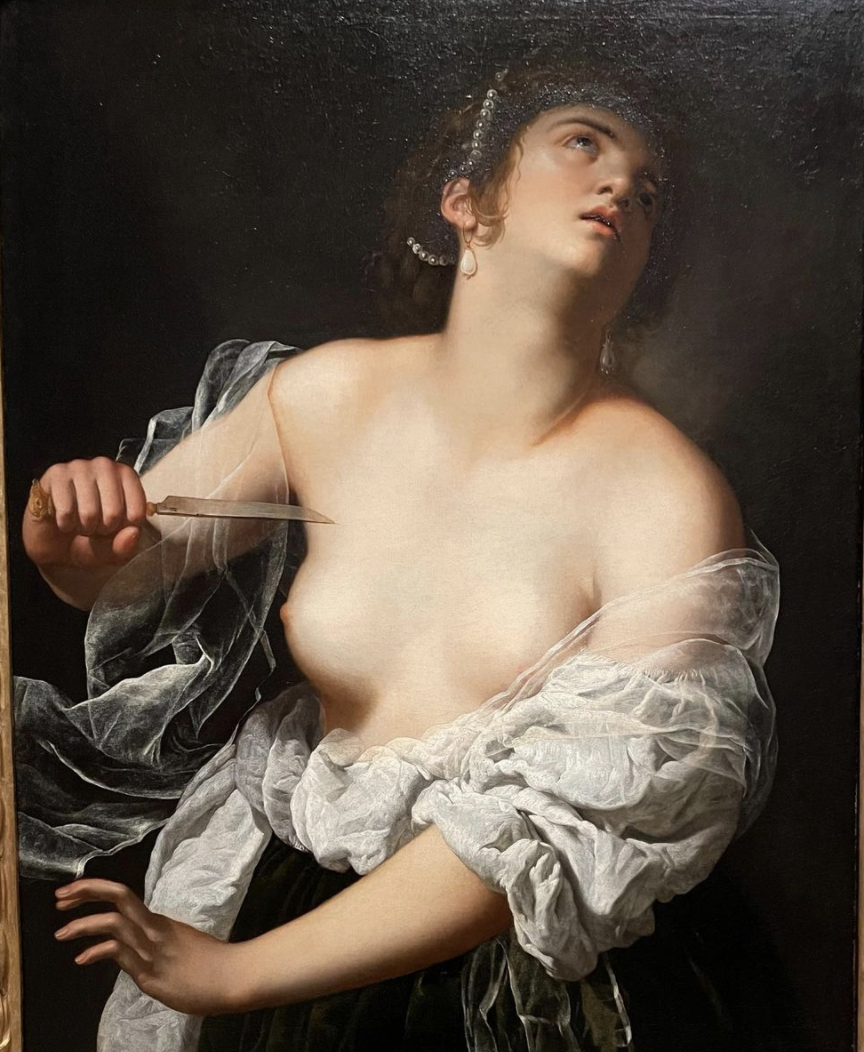Though this new acquisition of the Getty has been widely reported, I wanted to stress how shocking the painting of Lucretia by Artemisia Gentileschi is in the context of the rest of the Old Master galleries at the museum. It's in a sculpture gallery--almost hidden away, though more accessible on the ground floor.
The purity of her alabaster skin is what is most striking, along with the dagger aimed at her chest, as well as her imploring, desperate glance upward. She's alone, no servants or attendants.
To remind: Lucretia, though married and noble, had been raped by the son of the King of Rome. She called for vengeance, 'refusing to live as an unchaste woman'.
I will leave it to the scholars to put it in context of Gentileschi's other works, but I can say that the painting stands out in the galleries for the rebellious nature of this woman, the only heroine I could find who was not portrayed as submissive.
Unlike the images of Bathsheba (yesterday) and Europa (the day before), which came from Holland, in Venice, at this same time (1627), there was a reaction from female artists and writers to the routine depiction of women from history as compliant--by men. Lucretia was one to whom they could point as being strong and virtuous.
Clearly, the artist's own personal experience of sexual violence had deeply influenced her rendering as was her willingness to paint truth to power. Today is her birthday.
